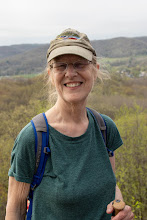Well, unbelievably enough, TTFLF has reached the ripe old age of 12 (always celebrated around the autumn equinox) and I have reached a milestone-ish 66.
So the blog and I looked at each other and said, "Let's retire at the same time!!"
I couldn't have imagined when I started my journey as a brash and foolish new MLISer in 1976 that I could have such a fulfilling career throughout my life as a youth librarian. I had amazing adventures in service with kids and families, was mentored by and worked with amazing colleagues, made mistakes and learned a ton every single day - right up until the day of my first retirement from full-time work in 2015 and then beyond in my four years of consulting.
For the last 30 years of my career, in my free time, I was able to freelance as a storyteller and a very part-time presenter and consultant traveling the state and country presenting on youth services topics. For the last ten years, I was so fortunate to be an educator and adjunct lecturer in the graduate school and continuing education department of UW-Madison iSchool, my alma mater. I am grateful to Michele Besant, newly-retired Assistant Director of the iSchool and Meredith Lowe of the CE Dept. for all their support and encouragement in making this dream of teaching a reality.
I am also grateful to the many, many friends, colleagues, leaders and peers who mentored me and shared their love of youth librarianship through lots of talk, support, disagreement, concerns, ideas and discussions over the decades. You all were - and are - my PLN; a well I dipped into, a lake I bathed in and a river I rushed along with throughout my career and I treasure each and every one of you.
This blog has been one of the ways I have met you all over the past dozen years. It has been a delight to send out thoughts and discover that there is an audience of readers -you! Connecting with other bloggers has been amazing as well. I have had the chance to meet some of you IRL and that has been great fun.
As the years have gone on since "Retirement 1", I have sadly neglected TTFLF as I stretched out into other volunteer and relaxing retiree activities far afield from librarianship. It is clear that the time has come to put this little Web 2.0 baby to bed. Seems like "Retirement 2" for me is the perfect time.
You will still find me on occasion at the Wisconsin Library Association's Youth Services Shout-Out blog where I post once a week (mostly). And I will probably be keeping half an eye out on all the adventures and trends happening in the youth librarianship world. After all, once a youth librarian, always a youth librarian!
Thanks for going along for the ride over the years! It has been great!















